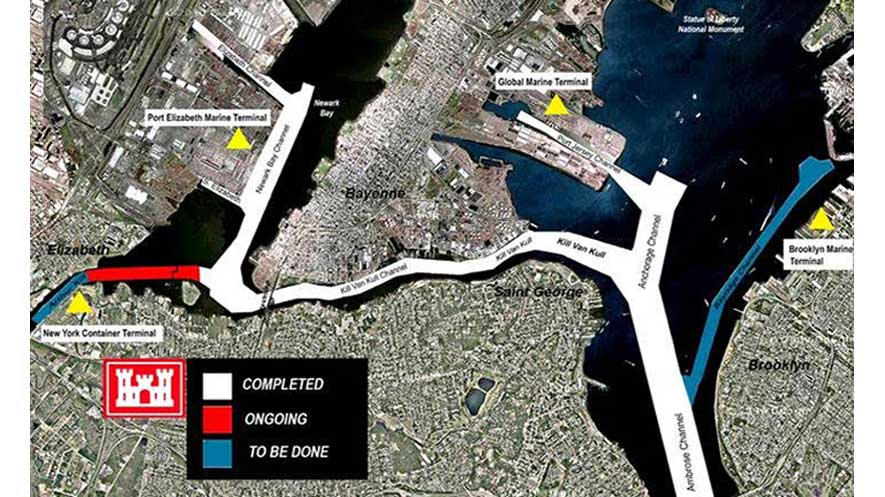This summer marks the end of an era for the waters around the Statue of Liberty. New York and New Jersey’s harbor deepening project will complete more than 20 years, 38 miles, and $1.6 billion of improvements to create a safe and efficient route for large container and cruise ships.
The harbor provides more than just access to ships. It’s found within the Hudson River estuary, home to many commercially and recreationally important fish; among them are bluefish, summer flounder, black sea bass, scup, and winter flounder.
NOAA Fisheries’ contribution to the project was to protect fish habitat that could be affected during dredging and port improvement activities. One bottom fish gained signature status during the project.
“There are so many federally managed fishery species within the harbor. When we drilled down and focused on things that don’t move or don’t get out of the way, we came down to winter flounder,” says regional EFH coordinator Karen Greene.
Commercial and recreational winter flounder landings are valued at over $1 billion. Winter flounder are a flatfish that use sandy and muddy bottoms to spawn, or release their eggs. Because these eggs are not buoyant and develop on the bottom, they are very vulnerable to dredging activities.
NOAA Fisheries recommended to the engineers which areas to steer clear of (shallow areas where winter flounder lay their eggs), and when to dredge (times of the year when eggs and larvae would not be present in the harbor). The project’s parties agreed to long-term sampling to study the various fish species in the harbor. For winter flounder, the Corps monitored eggs, larvae, juveniles, and adults. They also characterized sediments and invertebrate fauna that are important attributes of fish habitat throughout the harbor, including underwater video surveys, as a pilot study, to describe habitats both inside and adjacent to navigation channels.
“We did some really unprecedented work collecting eggs and larval stages . . to have ten-plus years of data from this study, as scientists, we’re in awe of all this,” says Doug Clarke, an HDR contractor on the project.
For more information, click here.



